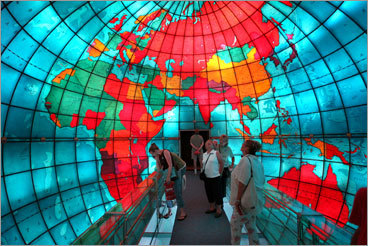I have confused things by bringing up Scientology, because the church Ms Eddy founded is known as the 'First Church of Christ, Scientist', or simply the Christian Science Church. But is totally unrelated to Scientology; indeed, it is built firmly on the bedrock of traditional Christianity, with added quackery thrown in.
As the story goes Mazzy Baker was deathly ill but manage to heal herself through rigorous application of faith in God and humanity, where the remedies of the day had done nada. (That the remedies of the day included homeopathy, magnetic healing and tapping doesn't seem to have been given much thought as a possible explanation.) Subsequently she wrote a book which tore through the American faith community, explaining how proper faith in Gawd and good honest Americanness would render you, and the world, endlessly and bountifully happy and healthy. Christian Scientists will probably argue I have paid lip service to their faith, but fuck 'em.
To her credit, she was exceptionally generous and charitable, and founded a faith based on much the same principles. She also valued journalism, and founded a now-major international paper by the name of the Christian Science Monitor, which has won much praise for its fair, balanced longview of international affairs.
She enters my narrative because she was a Bostonian, and I went to her church. More than to learn about her, though (sorry babes), I was interested in a beautiful structure known as the Mapparium.
To represent the global reach of the Christian Science movement, in 1935 they commissioned Chester Lindsay Churchill to build a three-story glass glove, onto the inside of which were painted, in resplendent hues, the nations of the world.
The Mapparium has been enhanced by a projection overlay to restore the faded colours to their 1930s lustre, and a fabulously kitsch 'we are the world' voiceover, but the map has not been redrawn at all. So, you can marvel at delights such as 'Italian East Africa', the lack of Pakistan, and muse on the fragility of nations, and the future of our planet. As the kitsch 80s voiceover heartily encourages you to do.

We are the world.


